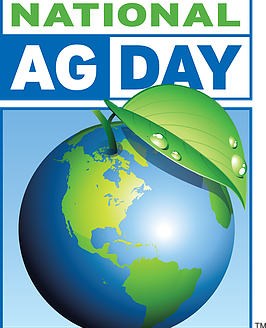Farmers and ranchers are the original conservationists and generational farming is on the forefront of every producer’s mind. For nearly every year over the past 50 years, farmers have steadily produced more food and fiber on fewer acres with less water and less nutrient inputs.
Fathers and mothers want to leave the land better than when they found it, for their sons and daughters. This topic isn’t new in Kansas we’ve been discussing soil health and conservation since the Dust Bowl. I remember my grandparents building terraces which helps shed water more efficiently to prevent soil erosion. The main theme of the current administration continues to be climate change. Ignorance of modern farming technology threatens to challenge modern farming’s great track record. Early adoption of innovative technology has long made the United States a superpower in feeding the world. Consumers across the world want access to our high quality, nutritious and extremely safe food that was produced with the most advanced agricultural technology in the world.
Agriculture is one of, if not, the only industry that can naturally sequester carbon. And we convert it into high quality food and protein. I see too many companies and regulators trying a top-down approach. They want to make carbon markets that work for businesses at the end of the value chain rather than asking producers what is best for the land they touch every day. It appears they are building these programs with the assumption that agriculture is part of the problem. However, such assumption couldn’t be further from the truth. In fact, everyone in agriculture understands we have been and will continue to be the solution, not the problem. Agriculture should really be in the driver’s seat on carbon policy.
The main concept that ignores modern agriculture’s success in conserving resources is the concept of requiring “additionality.” Additionality is big business’s idea of only tying value to sequestering “new carbon” through the adoption of practices new to the individual farm. They don’t care if a farmer currently sequesters a half-ton of carbon per acre, they only care if a farmer can sequester more. Additionality as the measurement of value is intellectually dishonest. Value should be assigned to the total amount of carbon reduced, mitigated, or sequestered each year, rather than merely the “new carbon.” Additionality could be a requirement of participation to get even more carbon sequestration, but the dollar value should be calculated in a way that doesn’t punish early adopters of efficient farming technology.
We’ve been no-till farming on my family’s ground for decades. Precision agriculture in Kansas is over 20 years old. For 8,000 years, farmers have used manure as fertilizer, which builds soil organic matter thus stores more carbon in soil. Grazing crop residue and cover crops, a common practice, let farmers have their cake with livestock eating it too. Grass waterways and woody windbreaks prevent soil erosion while up taking carbon and are age old practices. All these practices have been used by farmers in different areas of Kansas for decades or longer.
Every acre of grass and every acre of crops, whether it is corn, beans, milo, cotton, wheat or sunflowers, remove carbon from the atmosphere to grow. In fact, U.S. agriculture, land use and forestry are a net sink for emissions, according to the Farmers for a Sustainable Future coalition, comprised of over 20 agriculture groups representing the major commodities grown in the U.S. as well as American Farm Bureau and the National Farmers Union. As of 2019, U.S. cattle producers have already avoided 2.3 gigatons of carbon emissions since 1975. That’s equivalent to 1.9 billion cars driven in one year and very different than you would be led to believe by folks errantly blaming climate change on cow flatulence.
Additionality is only one of many top-down concepts that haven’t been thoroughly vetted by the average agricultural producer a producer that was reducing his/her carbon footprint since before it was cool all while feeding exponentially more people. Let’s not get the cart before the horse on an important subject to consumers of food. We have limited resources to feed, clothe, fuel and house people. Anything that is proposed must, first and foremost, continue to encourage the efficient and abundant production of such. We must also ensure we can adequately and honestly measure all the good work farmers are currently doing. Above all else, real farmers must have a seat at the table because after all, they are the original environmentalists.
—Sen. Roger Marshall, R-KS, is a member of the Senate Committee on Agriculture, Nutrition and Forestry.



